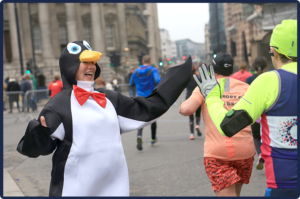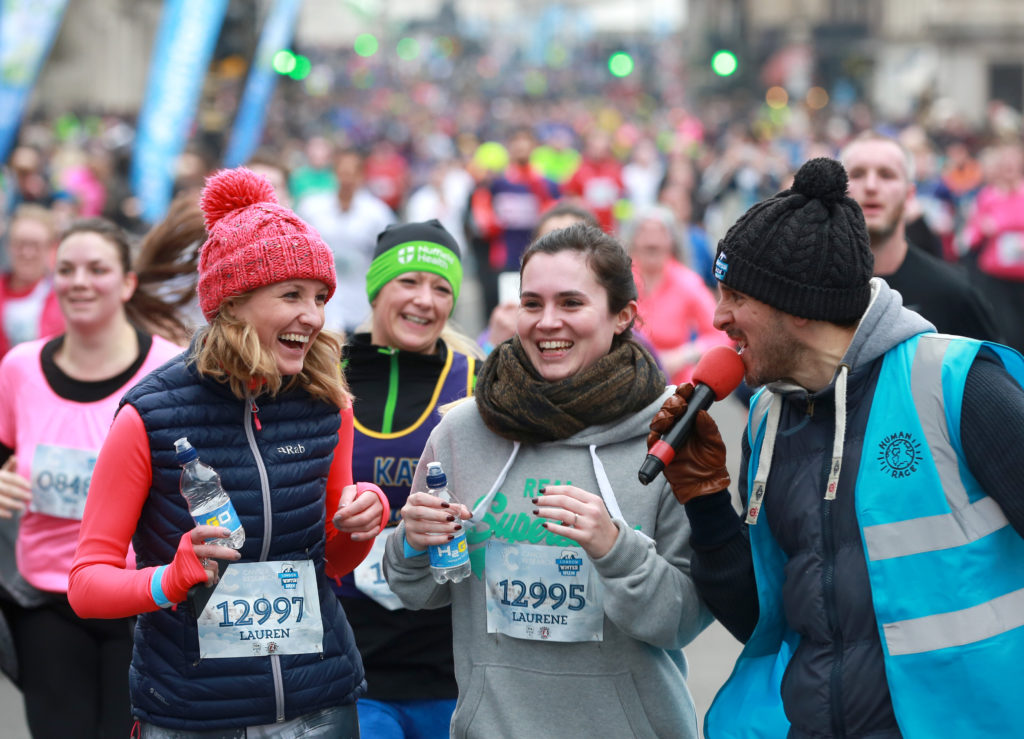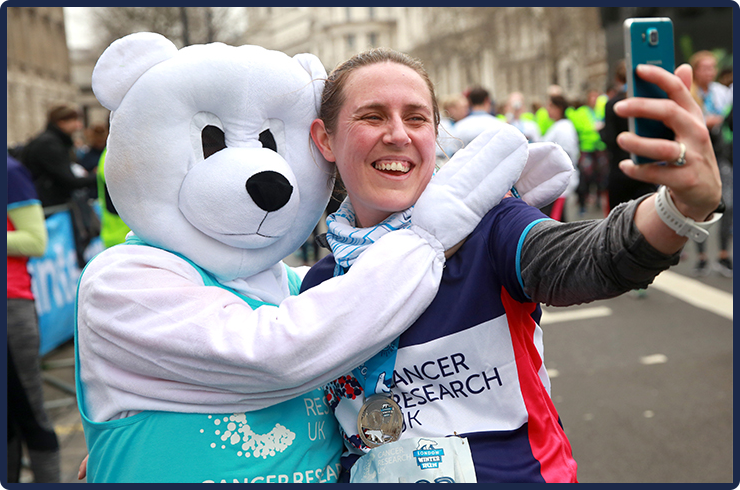Nine tips for your Cancer Research UK London Winter Run
Irish Olympian Thomas Barr is the current Irish senior record holder for the 400m hurdles, a four time national champion in the 400m hurdles and has represented Ireland multiple times in underage and senior competition.
Safe to say, he knows the best ways to train!
Optimum Nutrition caught up with the Waterford-native, who filled us in with his top tips on how to up your game athletically, and allow yourself to train and recover stronger, better and smarter.
1. Make stretching your top priority
Barr couldn’t express strongly enough the importance of stretching your body properly before and after training. And, he practices what he preaches…
“Stretching is key for keeping and maintaining flexibility in your muscles, which in turn then helps prevent injury. It’s a sprinter’s life really. For me, I usually spend 45 minutes to an hour pre-session to get the body completely ready to go and ready to get the hips over hurdles.
Stretching is really key, especially if you’re tight from previous sessions. I usually spend the time foam rolling my trigger points and then doing drills.”
After training, Barr spends another 45 minutes to an hour stretching and cooling down as to not impair his next training session. This involves jogging and light stretching as well as hamstring and calf stretches with foam rollers right after training, this will really prevent injury and make the recovery easier.

2. Don’t scrimp on protein
Barr did a masters in Sports Science, so he understands the methodology and importance of a good diet, something he says really helps.
“Protein is the building block of muscle. In order to grow and repair muscles after a running session, you need to get your protein in. That’s how your muscles grow and recover afterwards.
So, after one training session or a full week of sessions, protein is key after each session to help the body repair, which allows me to maintain intensity in each session as the week progresses which ultimately leads to better training capacity.
Usually straight after I train, I take the Gold Standard 100% Whey, to support immediate muscle growth and repair. I follow this up with some carbohydrates and protein in pretty soon after; rice and chicken is perfect. Simple carbs are key as they digest faster allowing my muscles to replenish the fuel that I have used during the session.
I usually get 125g protein into me across the day. I’d eat eggs for breakfast, double up on ham in a sandwich or chicken in a wrap or a bowl of chicken for lunch, and for dinner I’d vary between beef, chicken or fish like salmon.
On top of my food, I’d make sure I get a Gold Standard 100% Whey Protein shake or two in during the day, which is convenient for me to incorporate into my nutrition..”
3. Make training part of your every day
With his love of athletics and extreme sports, not to mention his infectious enthusiasm for life, it seems that Thomas Barr can do just about anything. However, he remains modest when we broach the subject of marathon running.
“I don’t know how those guys keep going for hours on end. I have massive respect for them. For someone who’s trying to get into it, I’d say find someone to go with. For me anyway, I find it very difficult to train on my own. My advice is to get a training partner, someone with a similar goal, to get you out there on the days that you’re lacking motivation to do a quick five or ten mile run.
Then it becomes habit and eventually, you almost crave it.”
 4. Invest in proper gear
4. Invest in proper gear
“Get a good pair of shoes or runners. You’re going to be making so much ground contact so these are vital. Get ones with plenty of cushioning and one that suits your feet’s needs. If you’re a sprinter, get yourself a decent pair of spikes.
Whether your feet are tucked in or out, you need shoes to counteract that.”
5. Mental preparation is just as important as physical
“For me anyway, I often operate the best when comfortable and confident in myself. One way I try to get into that state is that I try to tell myself that between now and the race there is no time for me to be able to improve my physical performance. So I should just go in, be confident that I’ve done the hard work and be happy that I’ve done the best I can.
Go into the race with the feeling that this is where I’m at now, and just aim to try and improve from there on in.
Before I race, I’ll head down to the track and walk around the track. If I haven’t been there before, I’ll take in the scenery; where the hurdle positions are, the wind resistance at different stages, where the bannering is right beside you or far away and whether there’ll be a crowd.
So when I get on the track, there are no surprises. I go through the race in my own head before it happens; coming out of the blocks, going all the way around, down the back straight and all that.
Then I’ll also have a set plan from my coach, who’ll tell me to explode out of the blocks, attack from 200m – 300m, stay relaxed with the hurdles and focus on driving for home once it comes to the end.
Also remember, that if all doesn’t go to plan, don’t panic – just use intuition and common sense and take it as it comes.”

6. Give your body time to recover
“As I said, protein is there to repair and rebuild. Carbohydrates are to replenish fuel stores and protein to repair muscle damaged. Training will lead to micro-tears in your muscles, which need to be repaired before you train again otherwise you’ll pick up a strain injury. Recovery is just as important as training. It is the ultimate preparation for your next session. After the gym I take the Gold Standard 100% Whey Protein straight away and that repairs muscles immediately. Even in the evenings, I occasionally take a shake, which will repair my body overnight”.
7. Feed your body the right stuff
They say you are what you eat, and no-one knows this better than athletes. When it comes to getting the right amount of this and that, Thomas has a few tricks up his sleeve.
“I drink loads of water. I hate plain water of so I throw in a bit of Gold Standard BCAA Train & Sustain every time.”
For him, it’s all about balance – and also spreading what you need throughout the day, “grazing”, as he calls it.
“That was one of the things I really learned about in my masters. Before I was taking in way too much food in one or two sittings, so what I’ve done is taken smaller portions throughout the day. I still have my three main meals, but they’re a lot smaller. Other than that I just try to take in all good food with a little bit of variation; meat, fish, chicken, beef, rice, pasta, sweet potato, couscous or something like that.
As well as that I have a bit of a sweet tooth, nothing wrong with the odd treat here and there. We’re not all angels.”
8. Join a club / Get a training buddy
When it comes to getting out there, Barr definitely believes that there’s strength in numbers: “Try a training group nearby, take advice from the coaches and just get involved. Again, that comes back to not wanting to train alone”.

9. Don’t expect overnight success
Barr’s final tip is to just take it all as it comes and enjoy the process, as these things definitely take time.
“Especially with sprinting, it can take a while to get into it or get going. At the start you can get rapid improvements, but take it as it comes. You have to listen to your body. You will get some muscle soreness in the beginning with sprinting due to the high and intense levels of ground contact, but if you’re feeling muscle strain then pull back from training and ease your way into it – you don’t want your physio to become your best friend. Like with any sport, the less time you spend at the physio the better. Enjoy the process, get out there and enjoy it.”

